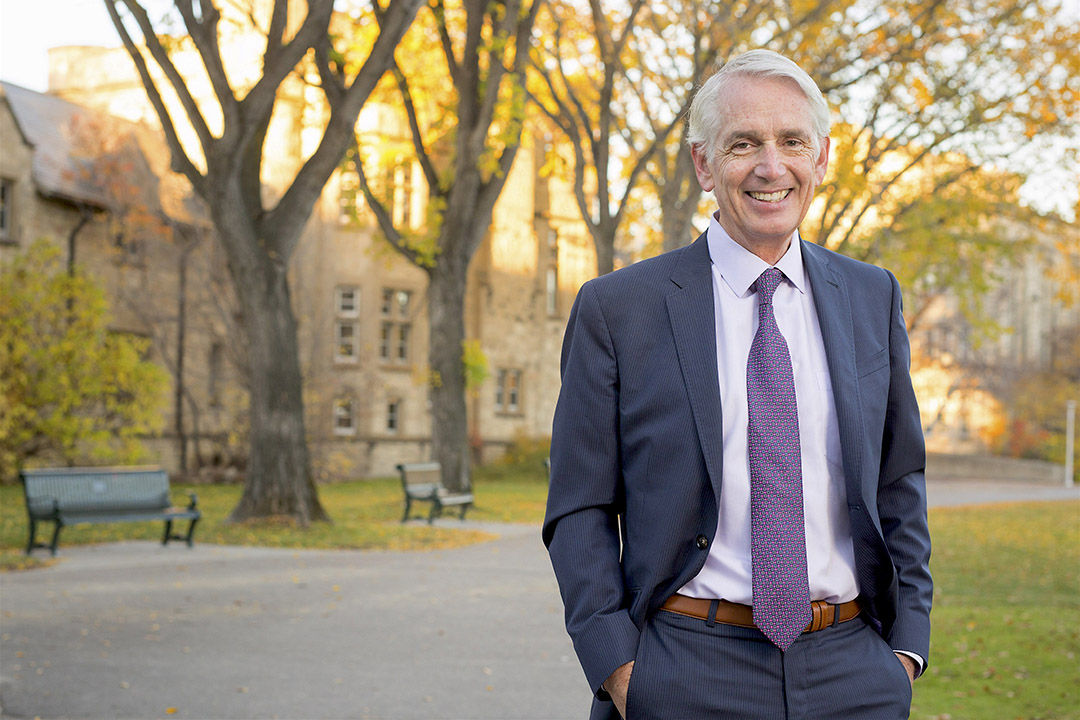The new university plan: U of S moves in a bold new direction
It is an innovative and inspirational document designed to shape the future of the University of Saskatchewan over the next seven years.
By James ShewagaThe new university plan to carry the institution through to 2025 is entitled The University the World Needs, and has been gifted Indigenous names nīkānītān manācihitowinihk (Cree) and ni manachīhitoonaan (Michif), which translate to “Let us lead with respect.”
The plan serves as a bold new departure, a new approach to integrated strategic planning to position the university as a leader not only locally and nationally, but also internationally by conducting research that provides worldwide impact, and training students to be engaged global citizens. And just as importantly, the new plan is about better communicating and celebrating those successes.
“It is a bold new direction for us and I think it is unique as plans go,” said U of S President Peter Stoicheff. “We talk a lot about boldness in the plan, and about our three key commitments: courageous curiosity, boundless collaboration, and inspired communities. And when we use that kind of language, it is not meant to contradict the humility that is so important to the institution.
“To me, humility is always knowing that you could be doing better than you already are. It is language to suggest that we can and should be working to take our rightful place among the greater institutions in the country, and in select ways, in the world.”

Two years in the making, the plan draws on extensive consultation from both on and off campus, and was launched Oct. 10 after being approved by the U of S Board of Governors, Senate and University Council. The plan builds on the 2016 Mission, Vision and Values document, and is deeply rooted in the principles of connectivity, creativity, diversity and sustainability.
“As we were building the Mission, Vision and Values document, I was struck by the fact that 60 per cent of our faculty have been hired in the past 10 years,” Stoicheff said. “So, this plan is not just about people like me who have been here for many years now, it’s about our new faculty. It’s about the people who are en route to tenure or are newly tenured, and they are the ones who were saying specific things about what they wanted this university to be. I found that really compelling and those are things that were incorporated into this plan.”
One of the key pillars of the plan involves Indigenous impact, which has been woven throughout the entire plan, guided by contributions from Indigenous Elders, traditional Knowledge Keepers, and Language Keepers, who gifted the plan with its Indigenous names during a special ceremony on campus in August. In addition to its ambitious goals and commitments, the new plan provides guideposts and targets to drive priorities and progress through to 2025, while featuring a fundamental commitment to reconciliation and Indigenization.
“Indigenization is not a separate commitment on its own, it runs through every single commitment that we have,” Stoicheff said. “And that’s the university of the future. As we talk more and more about reconciliation and Indigenization, the people who really know what that needs to look like include the Indigenous communities and the Indigenous leaders and the Indigenous students and the Indigenous Elders. And they have played, and will continue to play, an integral role throughout this entire process.”
Goals of the new seven-year plan range from increasing enrolment, peer-reviewed funding, and interdisciplinary and collaborative programs and partnerships, to improving academic rankings, enhancing alumni engagement, and being recognized as a leader in Indigenization locally, provincially, nationally and internationally.
Stoicheff said the progressive plan provides five key areas of impact that the university will aspire to achieve and accentuate over the next seven years: transformational work leading to reconciliation, productive collaboration, meaningful impact, developing distinguished learners, and earning global recognition.
“We want to make a difference in the world, based on what we are doing at this university,” Stoicheff said. “We want to have an impact, and not just the impact that we believe communities and the world needs, but the impact the world needs us to have. And that led to the formulation to become ‘the university the world needs.’ We are determined to be an engaged university, a university that is boldly exploring the major challenges of our time, that we are equipped to explore and help solve.
“One example of that is our Global Institute for Water Security, which is ranked by the Shanghai Academic Rankings of World Universities as No.1 in the country, No.6 in North America and 18th in the world. And I would strongly suggest that those numbers beyond Canada will even improve.”
So how will the university define success seven years from now? For Stoicheff, the institution will be firmly focused on the future, designing disruptive technologies and preparing students to take their place in an ever-changing workplace environment.
“We will be a university that not only trains students for the workplace, but prepares them for the challenges that the future workforce will face,” Stoicheff said. “Disruptive technologies are leading us to the point where we need to understand that we are training students now in skills for jobs that neither the students, nor we, can imagine. By 2025 we will be a university that is comfortable with disruption and comfortable with disruptive technologies, and that is also contributing to it in the research that it does.
“To that end, we will govern ourselves not only on the basis of what we want to be, but what the world needs us to be.”

